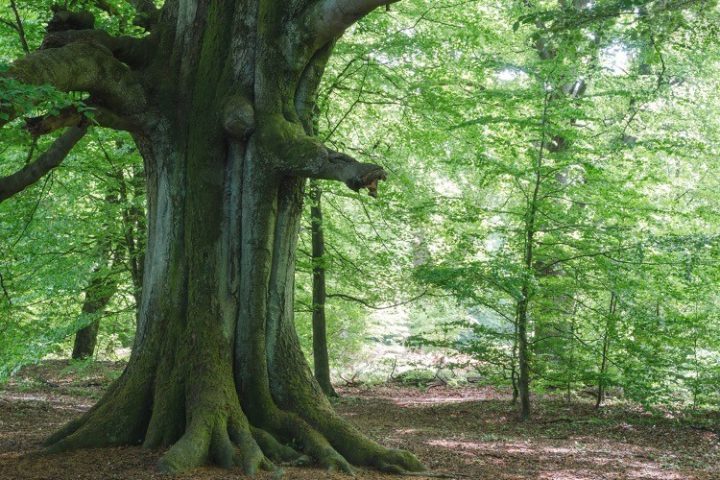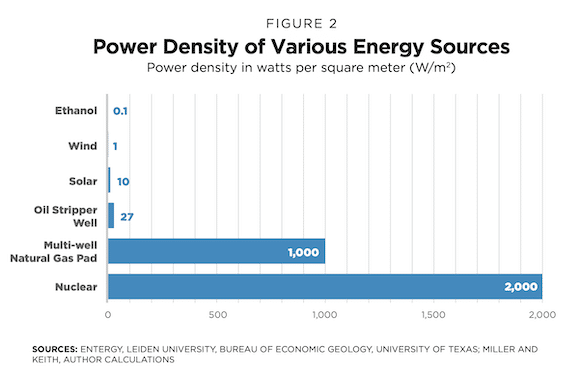
Having trees dating back to before America’s discovery, it’s known as “Grimm’s fairy tale forest.” But it now faces a grim fate, being slated for denudation to make room for a wind farm.
The place that will become, ironically, less green in going green’s name is the Reinhardswald State Forest in Germany, home to 600-year-old oaks and beech trees that have seen four centuries.
Commentator Monica Showalter provides some background, writing that the Germans “got rid of their nuclear power in the wake of the 2011 Fukushima nuclear meltdown after a big earthquake in Japan, (despite Germany not being in a quake zone), driving themselves to dependency on foreign suppliers. That’s presented problems for them what with Russia filling that role, so their other recourse has been the one Joe Biden is touting for America: Green energy — like wind and solar power.”
“It’s costly, requiring state subsidization, given that Germany is not a big sunshine zone nor particularly windy,” Showalter continues.
Nonetheless, the nation is forging on ahead with wind fantasies. Website Watts Up With That reported on the Teutonic enviro-turpitude Friday:
About a year ago we reported on disturbing plans by the government of the German state of Hesse to clear 20 million square meters of … forest in one of Germany’s most idyllic, fairy tale-like forests: the Reinhardswald located in the hilly region west of the city of Göttingen.
The Reinhardswald is known as the “treasure house of European forests” or the “Grimm’s fairy tale forest”.
A total of about 2000 hectares (20 million m²) of the … Reinhardswald was designated for destruction by the state in order to clear the way for a massive wind power plant development.
… [Tragically, the] battle to stop the destructive project has been dealt a severe blow as the construction of access roads began 2 days ago. The massive resistance of the affected citizens was ignored by the Hesse state government, which ironically is governed by a coalition of the CDU conservatives and environmentalist Greens.
While the size of Montana (population: one million), Germany has 83 million people. So reality is, as I can attest having spent much time there, what you’d expect: There aren’t many “wide open spaces.” Yes, there are some quaint old towns and relatively small, manicured forests, but Germany has nothing tantamount to our Pacific Northwest. So anyone truly concerned about the environment just might want to preserve what’s the rarest of things in that nation: a pre-Columbian forest.
The Reinhardswald area certainly lives up to its billing, too, as the video below attests.
Yet given Germany’s embrace of wind fantasies, the targeting of the old-growth forest isn’t surprising. After all, “Wind and solar energy are both essentially obsolete technologies,” wrote Powerline last year. This is mainly because they’re low-intensity energy sources; meaning, they don’t produce very much wattage per square meter (chart below). Thus would it require, for example, a region three times California’s size to meet the United States’ current energy needs with wind power, according to this analysis.

As the above indicates, wind is the second-least space efficient of the listed energy sources. And densely populated Germany has to find the room for this green boondoggle somewhere.
This scheme also isn’t surprising because of another motivation. “It sounds like a money scam, with politicians and connected political business cronies planning to harvest themselves some green of the monetary kind,” writes Showalter.
Unfortunately, this cutting-green-to-make-green phenomenon is not restricted to Germany. As I reported last May, the Northeast’s last great forest — the North Maine Woods — is in the crosshairs of foreign energy companies that stand to make millions by cutting away a huge swath of it and irrevocably altering its character. The goal is to make way for the Central Maine Power Corridor, a planned project that would enable the transfer of “clean” green energy from Quebec, Canada, to Massachusetts. And also as in Germany, the “green” powers that be aren’t too sympathetic to the locals opposing the scheme.
The irony here is that, as I’m old enough to remember (unfortunately), there was a time when saving forest was an environmentalist priority. In the early ‘70s, we were told to transition away from paper supermarket bags (then the norm) because we were cutting down too many trees. This threat was also probably overblown, as the United States was then on pace to have what it does now: more forested area than 100 years ago. But although the environmentalist movement was always a bit unhinged, at least this reflects more realistic priorities.
Related to this and coming to mind here is the 1971 anti-littering public service announcement “Keep America Beautiful.” Yes, it’s a bit corny (video below), but it combats something real. Your environment is nicer when there isn’t litter around than when there is litter around.
Likewise, preserving forests is something real: Our environment is nicer when there are more green spaces than when they are fewer green spaces. But today’s environmentalists aren’t concerned about that. They don’t care that illegal aliens litter our southwestern deserts, that human feces and hypodermic needles mar San Francisco, and that California train robbers transform railroad tracks into garbage dumps. They’d rather turn the world upside down over a hypothetical threat that’s ever and always, curiously, 12 years away from the present.
So where are the tree-huggers who used to chain themselves to conifers? They aged, cut their hair, put on suits, and chucked the chains upon discovering that destroying trees could make them rich.



